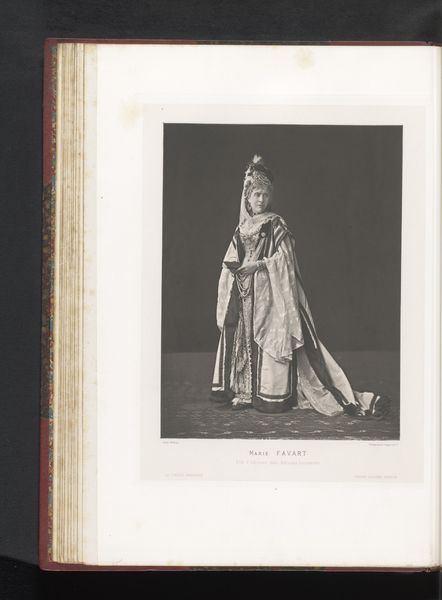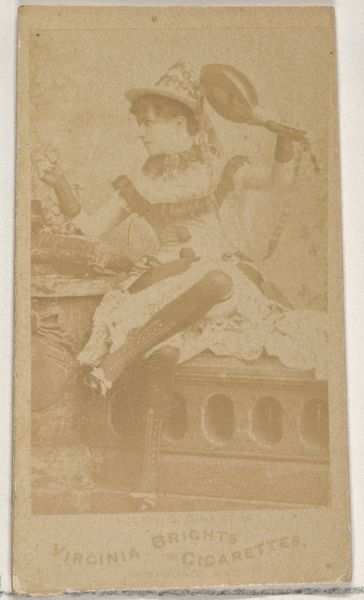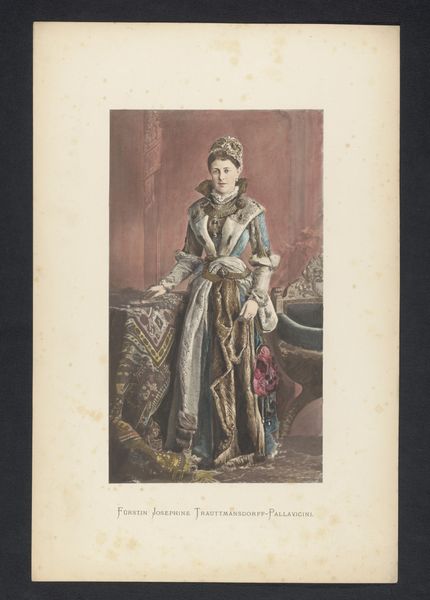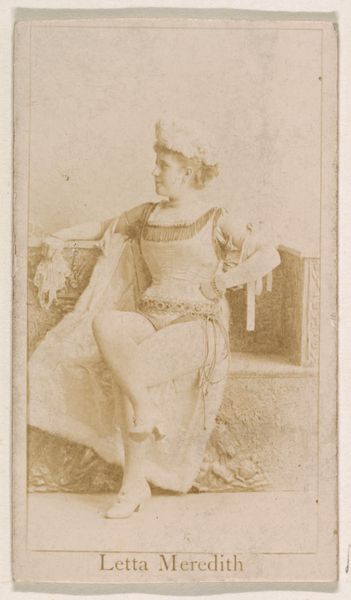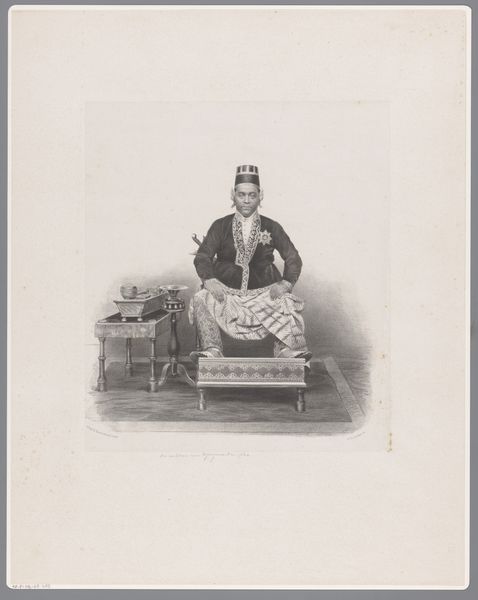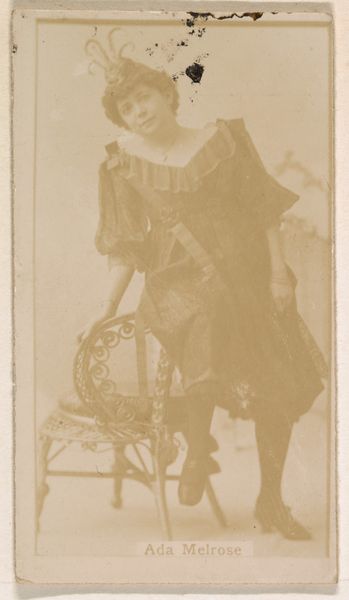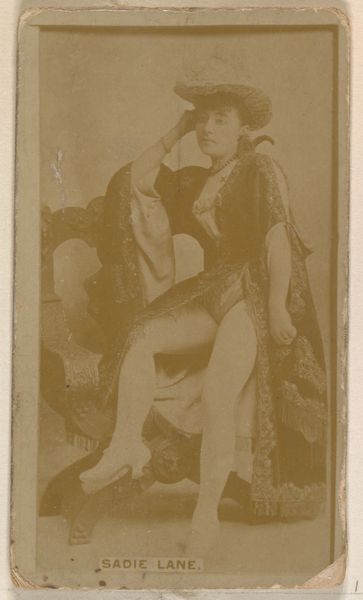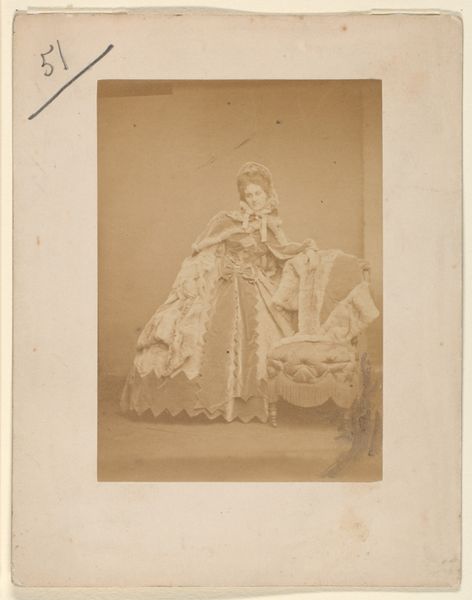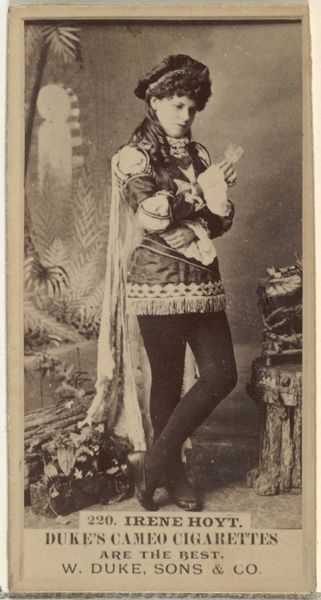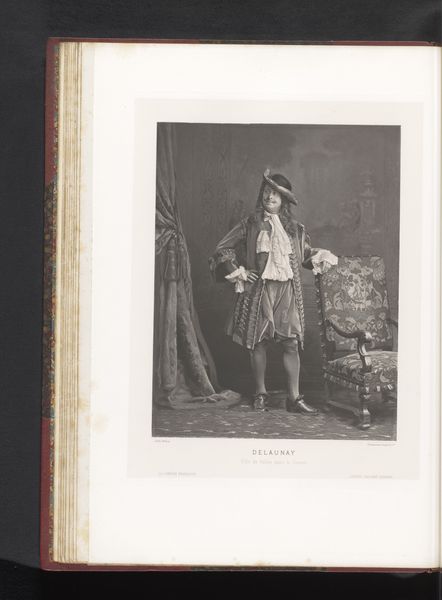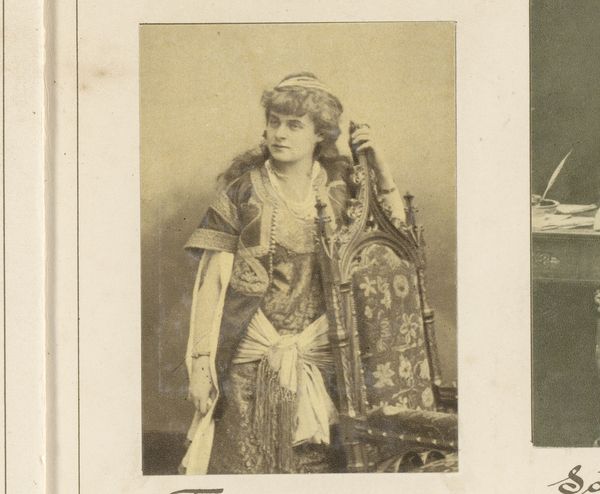
photography, gelatin-silver-print
#
portrait
#
photography
#
gelatin-silver-print
#
genre-painting
Dimensions: height 140 mm, width 89 mm
Copyright: Rijks Museum: Open Domain
Editor: So, this gelatin silver print from 1938, titled "Portrait of the tenor Louis Dister, as Marouf in the opera Marouf" by René Lonthie, features what appears to be an opera singer in costume. There's an inscription, perhaps a dedication, across the lower half. What strikes me is how posed it feels; it really evokes a sense of theatrical artifice. What are your initial thoughts? Curator: My immediate response focuses on the production itself. The photographic gelatin silver print allows us to scrutinize the details of the costume. Consider the materiality: the fabric, the apparent weight, the possible construction methods used to create the specific orientalizing silhouette for this character. How does the act of staging, through costume and gesture, contribute to the image's meaning, and potentially obscure the labour behind its creation? Editor: That's a great point, how the constructed image can overshadow the work that went into it. It makes you wonder about the socio-economic context of theater production at that time. Were costumes like this common, or considered extravagant? Curator: Exactly! Think about the labor involved. Who made the costume? How was it financed? And how does the photograph, as a commodity, participate in circulating the image and, therefore, the values associated with this staged "oriental" figure? Is it just a record, or is there something deeper being conveyed? Editor: It is fascinating to consider the costume, photography, and stage production all as forms of labour. Are there any other clues related to that, hidden within the print, maybe in his attire? Curator: Look at the textures - are they real or illusions created by the lighting and photographic process? Consider also how the technology of photography here creates this particular form of “realism” – we think of photography as documentary, but here it’s clearly a staged performance *of* documentation. This creates multiple layers of artifice that affect the social narrative of the opera. Editor: That is an interesting observation! I had not considered the interplay between "realism" and staging within photography itself, particularly within a work documenting theater. I now see the labor and construction involved in the whole. Curator: Precisely. Examining the photograph's production, its materials, helps to deconstruct the layers of meaning and consider the socioeconomic dimensions inherent in the depiction of Dister as Marouf.
Comments
No comments
Be the first to comment and join the conversation on the ultimate creative platform.

